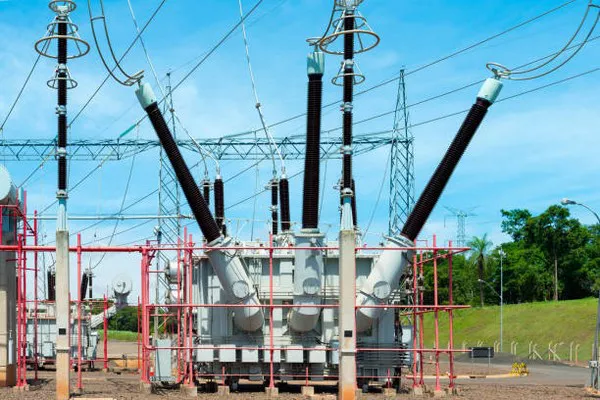Buck-boost transformers are essential components in electrical systems, particularly where voltage adjustments are necessary to match specific equipment requirements. These transformers offer a versatile solution by either stepping up (boosting) or stepping down (bucking) voltage levels. Understanding the operation of buck-boost transformers is key for engineers and technicians working with diverse electrical setups. Let’s delve into the working principles of buck-boost transformers, their applications, and considerations for effective implementation.
How does a Buck-Boost Transformer Operate?
To comprehend how buck-boost transformers function, it’s crucial to grasp their configuration. Typically, a buck-boost transformer consists of two separate windings: a primary winding and a secondary winding. The primary winding is designed to connect to the power source, while the secondary winding is linked to the load or equipment. What distinguishes buck-boost transformers is their ability to be interconnected in various configurations to achieve specific voltage adjustments.
In a buck configuration, where the primary winding is the input and the secondary is the output, the transformer reduces the output voltage level compared to the input voltage. This is achieved by connecting the load across the entire secondary winding. Conversely, in a boost configuration, the primary winding functions as the input, and the load is connected across the entire secondary winding, resulting in an increased output voltage compared to the input. The flexibility of buck-boost transformers lies in their capability to be connected in either of these configurations based on the desired voltage adjustment.
What are the Applications of Buck-Boost Transformers?
Buck-boost transformers find extensive applications across various industries and settings due to their versatility in voltage regulation. One common application is in HVAC (heating, ventilation, and air conditioning) systems, where these transformers are utilized to ensure that equipment operates at the correct voltage level despite fluctuations in the power supply. For instance, HVAC systems often require specific voltages different from what is supplied by the utility grid. Buck-boost transformers enable the adjustment of voltage levels to match the equipment specifications, ensuring efficient and reliable operation.
Another key application is in industrial machinery and equipment. Many industrial processes involve sensitive machinery that requires precise voltage levels for optimal performance and safety. Buck-boost transformers allow for the fine-tuning of voltage to meet the exact requirements of such equipment, thereby preventing damage and enhancing overall productivity. Additionally, these transformers are employed in telecommunications infrastructure, renewable energy systems, and lighting installations where voltage adjustments are necessary for stable and efficient operation.
What Factors Influence the Selection of a Buck-Boost Transformer?
Choosing the right buck-boost transformer entails considering several critical factors to ensure compatibility and effectiveness within a specific electrical system. One fundamental consideration is the power rating of the transformer. This refers to the maximum amount of power, measured in volt-amperes (VA) or kilovolt-amperes (kVA), that the transformer can handle safely. Selecting a transformer with an appropriate power rating ensures that it can support the connected load without overheating or causing voltage instability.
Additionally, the input and output voltage requirements play a pivotal role in transformer selection. Understanding the required voltage adjustment (step-up or step-down) and the magnitude of the adjustment is essential. Some buck-boost transformers offer multiple tap configurations on their windings, allowing for precise adjustments within a range of voltages. Matching the transformer’s voltage capabilities with the specific needs of the application is crucial for optimal performance and reliability.
Moreover, considerations such as physical size, efficiency, and environmental conditions should not be overlooked. The physical dimensions of the transformer should align with the available installation space, while efficiency ratings indicate how effectively the transformer converts electrical power. Environmental factors like ambient temperature and humidity levels can impact transformer performance and lifespan, necessitating careful evaluation during the selection process.
How are Buck-Boost Transformers Installed and Maintained?
Proper installation and maintenance are imperative to ensure the longevity and reliability of buck-boost transformers. During installation, it’s essential to adhere to manufacturer specifications and local electrical codes. This includes correctly sizing the transformer based on load requirements and ensuring secure electrical connections. Proper grounding and insulation techniques should be employed to prevent electrical hazards and ensure safety.
Routine maintenance is vital for detecting potential issues early and preventing unexpected failures. Regular inspections should involve checking for signs of overheating, loose connections, or physical damage. Transformers should be kept clean and free from debris, and any abnormalities should be promptly addressed by qualified technicians. Periodic testing of voltage levels and insulation resistance can help identify emerging issues before they escalate, thereby maximizing transformer lifespan and system reliability.
See Also What Does An Audio Transformer Do
Conclusion
In conclusion, buck-boost transformers play a crucial role in voltage regulation within electrical systems across various industries. Their ability to adjust voltage levels either up or down makes them indispensable for ensuring equipment operates at optimal performance. By understanding how buck-boost transformers operate, their applications, and key selection and maintenance considerations, engineers and technicians can effectively integrate these transformers into electrical setups, enhancing efficiency, reliability, and safety. As technology advances, buck-boost transformers continue to evolve, offering more sophisticated solutions to meet the demands of modern electrical systems.

